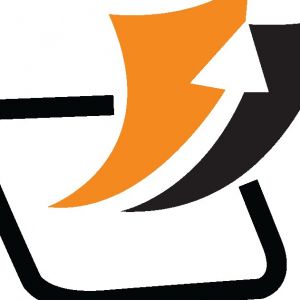5 Rising Trends In Enterprise Governance, Risk, And CompliancePosted by KBV Research on September 13th, 2019 Today, enterprises are facing challenges that are attributed to the dynamic economic, volatile market and the pressing regulatory environment in which they operate with margins squeezing and rising competition. Their strategic goal of increasing revenue in such difficult times requires an ongoing evaluation of the adequacy and effectiveness of the processes of enterprise governance, risk, and compliance (eGRC). Enterprise governance, risk, and compliance (eGRC): an overviewFor some time now, the concept of governance, risk, and compliance has been quite prevalent. Although eGRC does not have a single, widely accepted definition, it is a detailed business strategy aimed at maintaining corporate governance and minimizing enterprise risk while staying in accordance with regulatory policies.
Governance guarantees business processes and throughout the organization, corporate policies are exercised. Corporate governance is the set of mechanisms, procedures, and relationships that control and operate corporations. Governance structures and principles define the distribution of rights and obligations among the different members of the organization (for example, boards of directors, executives, shareholders, creditors, auditors, regulatory agencies and others), and include guidelines and procedures for decision-making on business affairs. Enterprise governance is essential due to the likelihood of stakeholder disputes of interest, mainly between shareholders and senior management or between shareholders.
Risk management identifies potential risk areas and prepares the organization for minimizing and preventing them. Risk management is the collection of procedures through which management identifies, analyzes and, if appropriate, adequately reacts to hazards that may adversely influence the achievement of the business goals of the organization. Risk response mostly relies on their perceived gravity and includes controlling, adopting, avoiding, or transferring them to a third party. However, organizations manage a broad variety of risks on a routine basis (e.g. technological risks, risk of information security, commercial/financial risks, etc.).
Compliance relates to the potential of complying with legal, regulatory and company policy requirements. Compliance means compliance with stated requirements. At an organizational level, it is accomplished through management processes. These processes define the requirements (defined, for instance, in laws, regulations, contracts, strategies, and policies), evaluate compliance status, and evaluate the risks and prospective costs of non-compliance with the planned expenses. It further helps to attain compliance, and thus prioritize, fund and initiate any corrective actions.
Business policies, software solutions, and services from the GRC allow businesses to execute, monitor and evaluate the efficiency of their strategies for governance, risk, and compliance. Enterprise governance, risk, and compliance strategies depend on obviously defined, measurable goals to provide insight into the general efficacy of businesses in each area of governance, risk and compliance. Since enterprise governance, risk, and compliance strategies encompass the entire organization, these tools and policies involve management and coordination across a variety of company departments, including IT, management, safety, enforcement, and auditing. 5 major enterprise governance, risk, and, compliance trends:
As web services and XML are leveraged by organizations to incorporate risk and regulatory content aggregators with external content, they try to create a hierarchy of risk and regulatory issues. The aim is to decrease the redundancy of data from several sources, to automate the identification of new developments, and to put this data to work in order to determine the effect and preparedness of business.
AI has tremendous potential for automating daily risk-related tasks, rationalizing costs while blockchain technology can assist companies to handle and share GRC information quickly. Big data can revolutionize how companies consume and use data while the cloud, in turn, allows data and information to flow seamlessly across places. However, the businesses have to be careful about the volume and variety generated by these new technologies.
Not all companies within a single department can have the eGRC skills and capabilities. This is where companies and experts from GRC consulting can help bridge the gaps. There is an ongoing trend that emphasizes bringing businesses and their resources together in a single, extensive eGRC platform–one that promotes open and transparent communication and allows individuals to learn from the best practices and errors of each other. This year, eGRC procedures based on technology and data are anticipated to contribute positively to businesses alike.
With the increasing spread of consumer devices such as "smart" security cameras, thermostats, as well as other devices coming online, businesses are collecting new data types that often include very private information. The issue of who owns this information is sometimes contentious, as the supply chain often involves various suppliers. Moreover, the delicate nature of this information implies that organizations like the Federal Trade Commission (FTC) are carefully monitoring how companies secure and/or monetize it from a consumer privacy perspective.
Using BPM as well as business rules engines drives risk management effectiveness and compliance enforcement within business processes and applications. This began with automated control software for tracking compliance access and task segregation within financial applications. In other business fields such as production, banking or supply chain/logistics, trading/investment, organizations are now exploring wider business rules engines and enforcing controls. The bottom lineEnterprise governance, risk, and compliance market are maturing with a highly structured approach. Organizations will be using technology to improve eGRC communication and tracking across company activities and relationships. In a complicated, global and hostile enterprise environment, filled with threats and opportunities, this has become a requirement. Today's business is defined by an ever-changing external and internal environment–with complexities stemming from the particular scenario, industry, relationships, and globalization of a company. Like it? Share it!More by this author |


